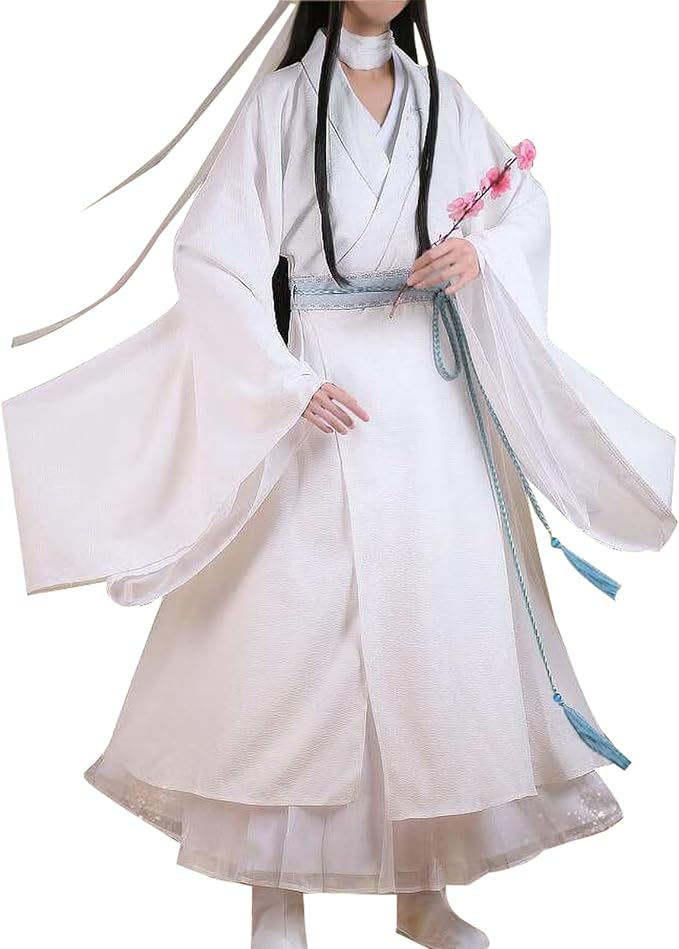Hanfu clothing, the traditional attire of the Han Chinese, has experienced a remarkable resurgence in recent years. In this article, we will delve into the captivating world of Hanfu clothing. From its historical origins to its intricate designs and cultural significance, we will explore the enduring allure and timeless beauty of this iconic garment. Hanfu clothing represents a celebration of Chinese heritage, embodying the grace and elegance of ancient Chinese fashion. Join us as we take a journey through time to discover the enchanting allure of Hanfu clothing.
I. Historical Roots: Tracing the Origins of Hanfu Clothing
1.1 Ancient Beginnings:
Hanfu clothing finds its roots in the attire worn during the Han Dynasty (206 BCE -220 CE) and earlier dynasties. These early styles influenced the development of Hanfu clothing, showcasing the rich historical tapestry and cultural heritage of China.
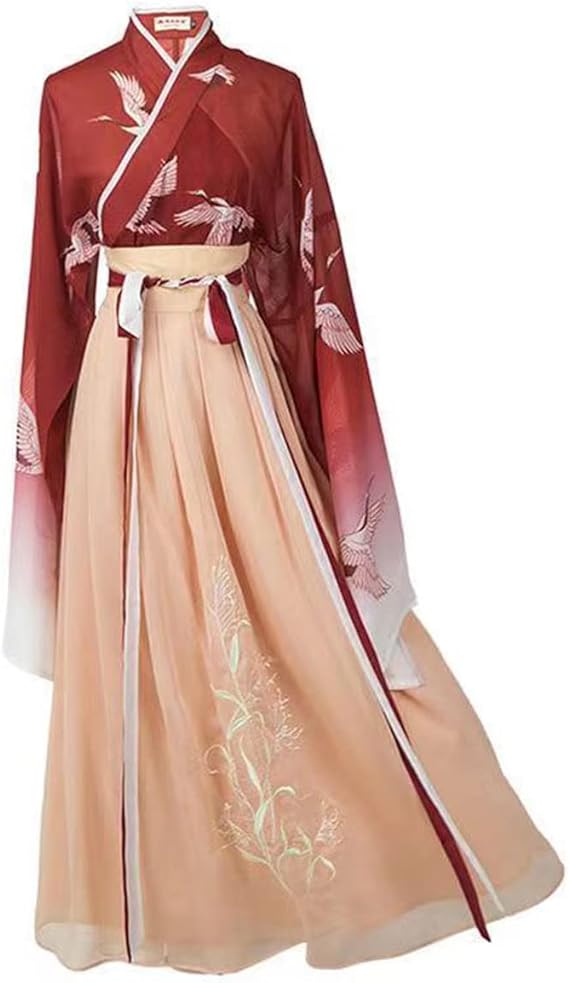
1.2 Cultural Significance:
Hanfu clothing bears immense cultural significance, representing more than just attire. It symbolizes the cultural identity and heritage of the Han Chinese. By wearing Hanfu clothing, individuals pay homage to their rich historical roots and celebrate the beauty and grace of Chinese fashion.
II. Design Features: Elements that Define Hanfu Clothing
2.1 Layered Silhouette:
A hallmark of Hanfu clothing is its layered silhouette, which adds a sense of depth and grandeur to the ensemble. The layering technique involves wearing several garments on top of each other, each layer contributing to the overall aesthetic and structure of the attire.
At the core of the layered silhouette is the foundation garment, called the Ruqun. The Ruqun consists of a top garment known as the Ru and a skirt-like bottom garment called the Qun. The Ru is typically a long, flowing robe with wide sleeves, while the Qun is a pleated or gathered skirt that falls gracefully to the feet. This combination of the Ru and Qun creates a harmonious balance between the upper and lower parts of the body.
On top of the Ruqun, additional layers can be added to accentuate the intricate details and patterns of the ensemble. This may include a Pifeng, a loose coat worn over the Ruqun, or a Daxiushan, a long robe with wide sleeves. Each layer is carefully chosen to complement the overall design, contributing to the visual richness and complexity of the Hanfu attire.

2.2 Intricate Sleeves and Necklines:
Hanfu dress is renowned for its attention to detail, particularly in its sleeves and necklines. The sleeves of Hanfu garments can vary in width and length, allowing for a range of styles and expressions. Some sleeves are wide and flowing, creating a sense of elegance and fluidity as they move with the wearer’s gestures. Others may be more structured, featuring intricate embroidery or patterns that highlight the craftsmanship and artistry associated with Hanfu.
The necklines of Hanfu clothing also exhibit a wide range of styles, reflecting the evolution of fashion trends throughout different dynasties. High, straight collars are often seen in more classical Hanfu designs, exuding a sense of sophistication and formality. On the other hand, wide open collars reveal the graceful lines of the neck and exemplify a certain air of freedom and openness.
The intricate detailing found in the sleeves and necklines of Hanfu clothing is often a result of meticulously crafted embroidery, silk ribbons, or other decorative elements. These embellishments not only enhance the visual appeal of the garment but also exemplify the skill and artistry of traditional Chinese craftsmanship.
In conclusion, the layered silhouette and intricate sleeves and necklines are key elements that define Hanfu clothing. The layering technique adds depth and dimension, while the intricate details in the sleeves and necklines showcase the craftsmanship and artistry associated with this traditional attire. Together, these design features transform Hanfu clothing into a visual symphony of elegance and cultural significance.
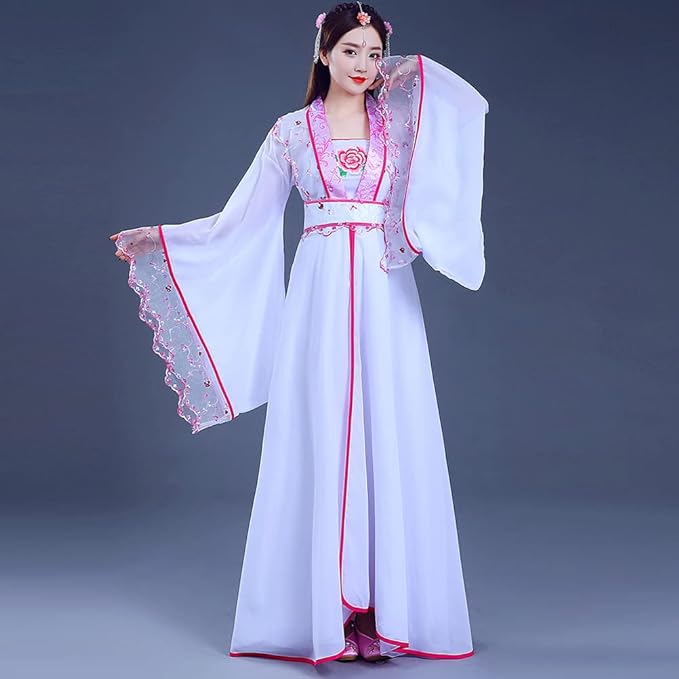
III. Regional Styles: Diversity within Hanfu Clothing
3.1 Traditional Styles:
Hanfu clothing displays regional variations that reflect the diverse cultural influences within China. From the straighter lines and high collars of the Northern Hanfu to the more flowing and relaxed styles of the Southern Hanfu, each region brings its unique interpretation to this iconic garment.
3.2 Festive Attire:
Hanfu clothing is not only worn for everyday occasions but also for special celebrations and festivals. Festive Hanfu attire showcases vibrant colors, intricate embroidery, and opulent accessories, enhancing the joyous atmosphere of these celebrations and immersing individuals in a sense of cultural pride.
IV. Cultural Resurgence: Preserving and Revitalizing Hanfu Clothing
4.1 Reviving Tradition:
In recent years, there has been a surge of interest in Hanfu clothing, fueled by enthusiasts, designers, and cultural institutions. They have played a pivotal role in organizing fashion shows, exhibitions, and online communities, dedicated to preserving and promoting the art of Hanfu clothing.
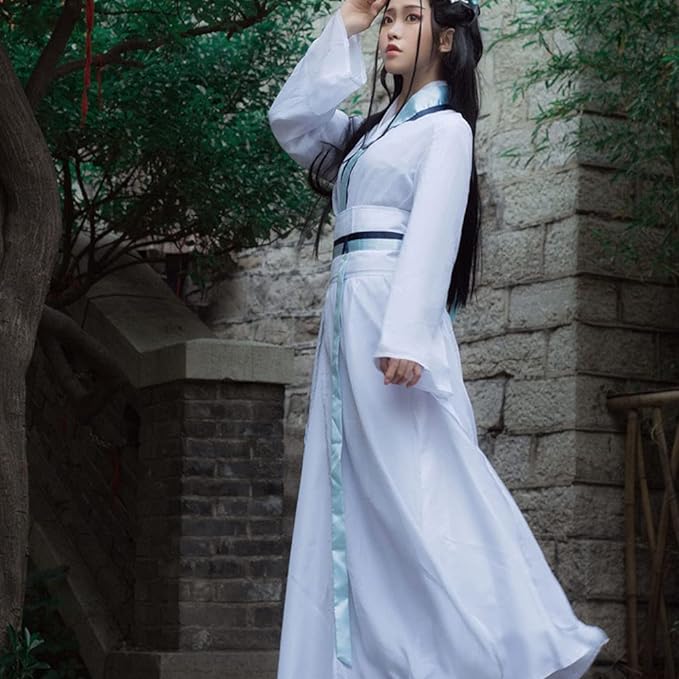
4.2 Cultural Exchange:
The resurgence of Hanfu clothing has not only revived Chinese cultural traditions but also sparked cross-cultural conversations and exchanges. People from different backgrounds and nations are drawn to the aesthetic and cultural heritage embodied in Hanfu clothing. This cultural exchange fosters a deeper appreciation and understanding of Chinese traditions and fashion.
V. Adaptation to Modern Times: Hanfu Clothing in the Contemporary World
5.1 Modern Interpretations:
Hanfu clothing has evolved over time to adapt to modern fashion sensibilities while maintaining its traditional essence. Designers have introduced modern interpretations of Hanfu clothing, incorporating new elements such as contemporary fabrics, innovative cuts, and fusion with other fashion influences. These adaptations ensure that Hanfu clothing remains relevant and accessible in the modern age.
5.2 Everyday Wear:
People are increasingly incorporating elements of Hanfu into their everyday attire, expanding the usage of Hanfu clothing beyond special occasions. This allows individuals to embrace the beauty and elegance of this traditional garment in their daily lives, merging the past with the present in a seamless fusion of style and culture.
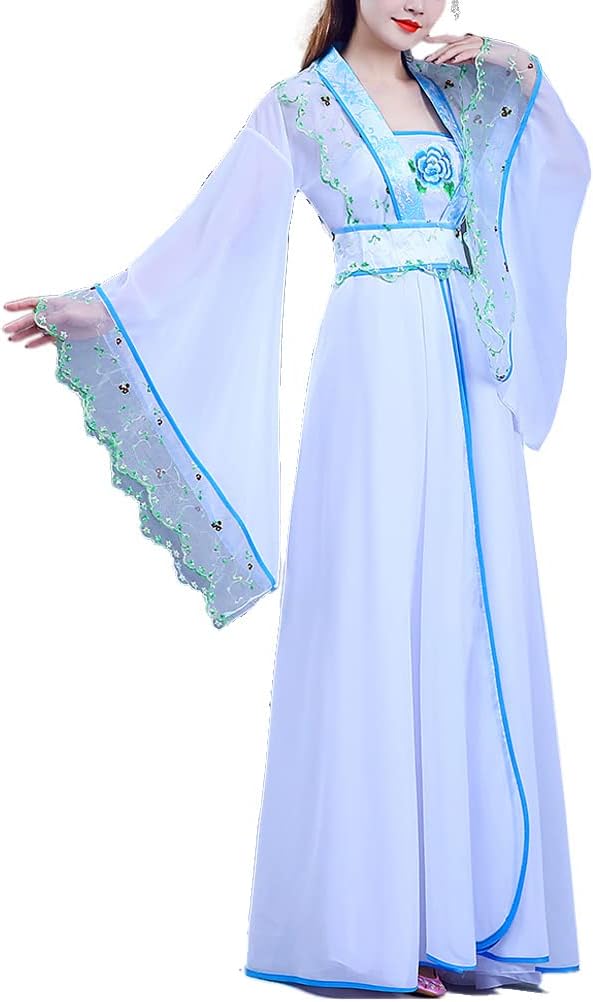
VI. Embracing the Legacy: The Enduring Appeal of Hanfu Clothing
In conclusion, Hanfu clothing represents more than just a traditional attire; it is a symbol of cultural heritage and identity. Its historical roots, layered silhouette, and intricate designs define its enduring allure. Regional variations within Hanfu clothing reflect the diversity of Chinese culture, while the contemporary adaptations ensure its relevance in the modern world. Through a revitalization of tradition and cross-cultural exchange, Hanfu clothing continues to captivate and inspire, preserving the rich legacy of Chinese fashion for generations to come.
